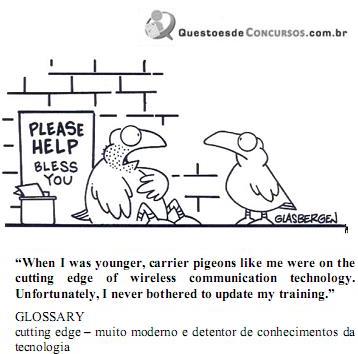Questões Militares Sobre inglês
Foram encontradas 4.268 questões
Choose the alternative that best completes the text.
The correspondent adjective for “Courage”, (line 06), is
All words below are nouns, except:
In “Believe that as long as you believe in yourself – anything is possible”, the underlined expression is used to talk about
We can infer from the poem that “all” and “anything”, both underlined in the poem, mean, respectively:
“prevail”, (line 4), is closest in meaning to
In “Believe that evil does exist in many forms, ...”, (line 22), the underlined word was used
The structure of the conditional clause in “… if you think you can’t, you won’t.” is the same as in
Choose the alternative so as to have the poem completed correctly.
“when crack users end up on the streets”, it means that they
According to the text, choose the alternative that does not fill in the blank.
Cracolândia __________.
Choose the alternative so as to have the text completed correctly.
(Adapted from www.cnn.com)
Choose the alternative that fills in the blank.
In “Brazil used to be one of the most unequal countries in the world”, the underlined words are closest in meaning to

By reading the cartoon, we can infer that if people don’t seek to update, they’ll get




